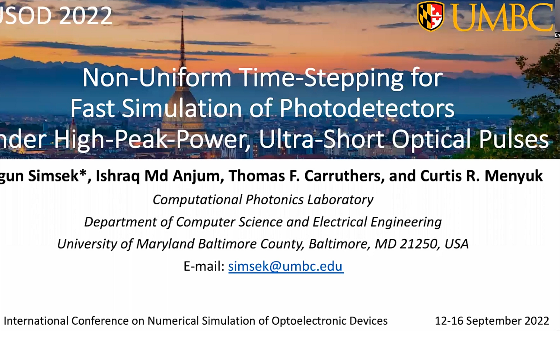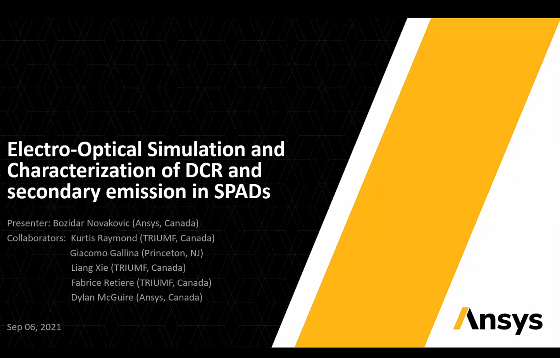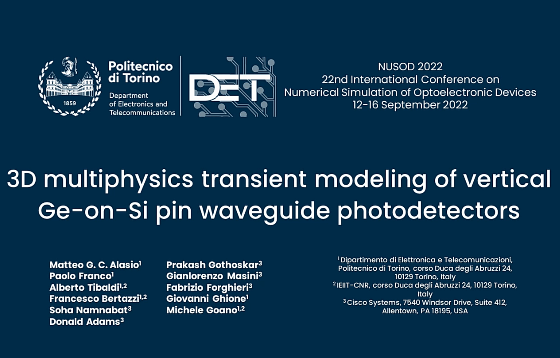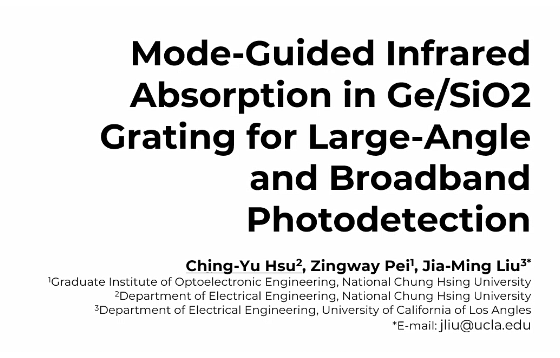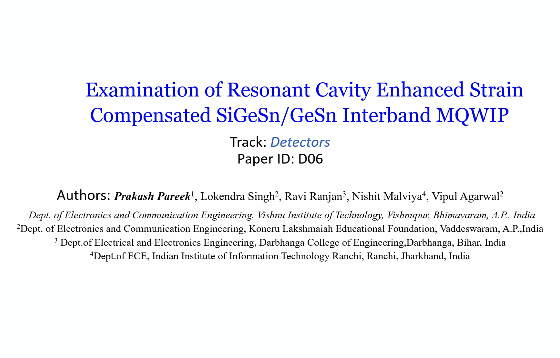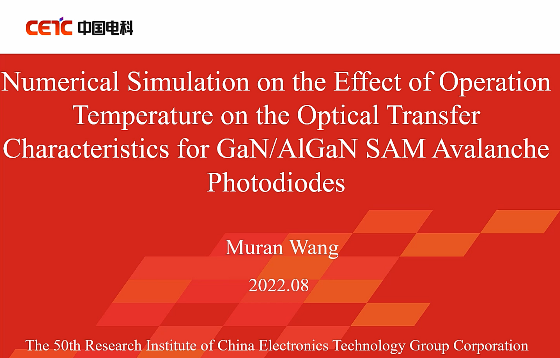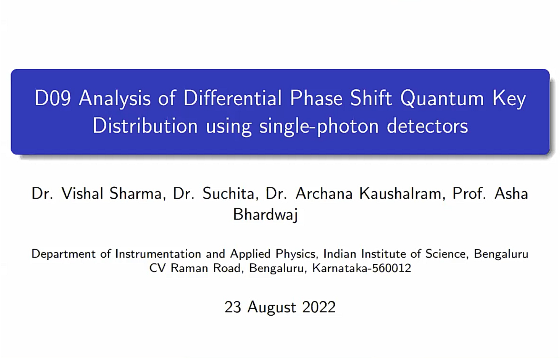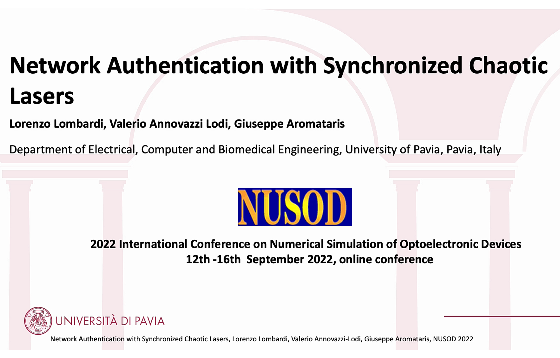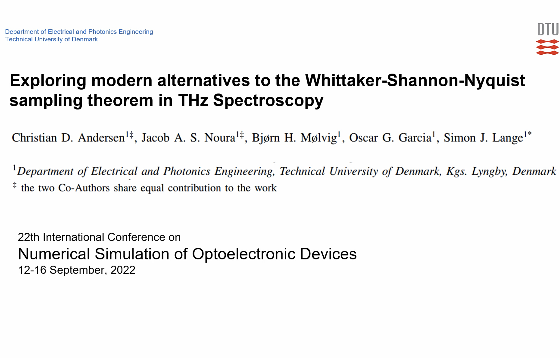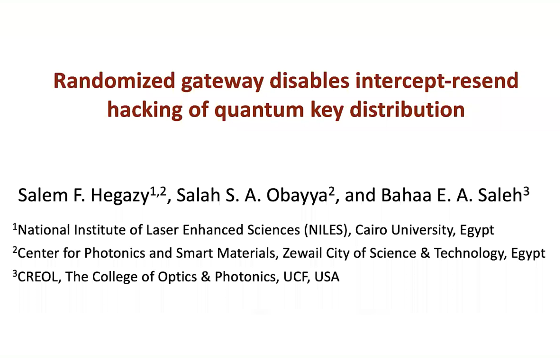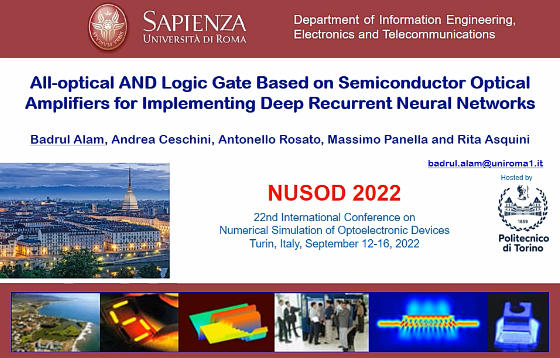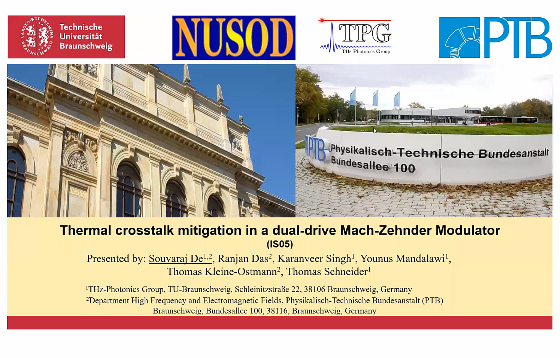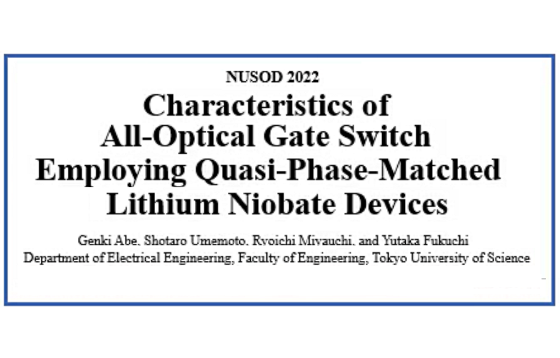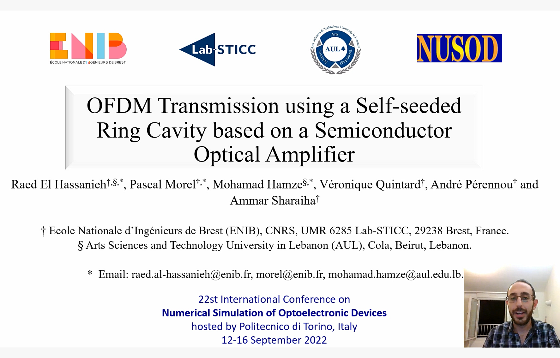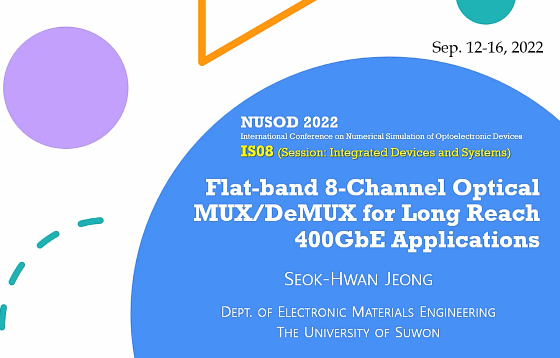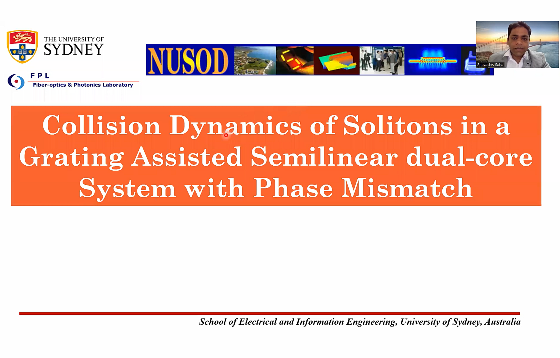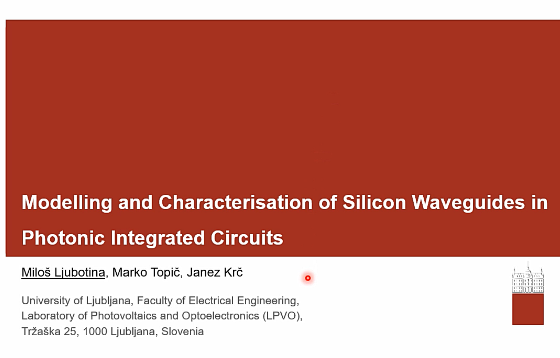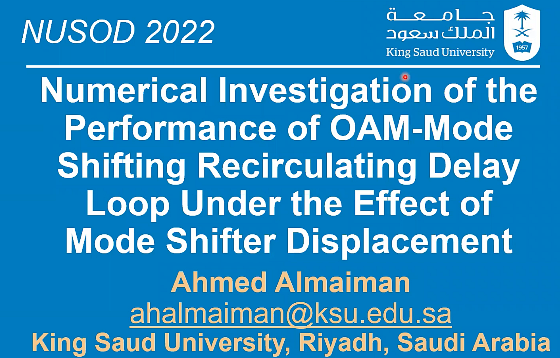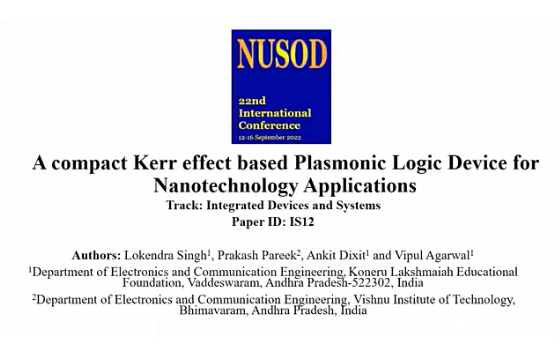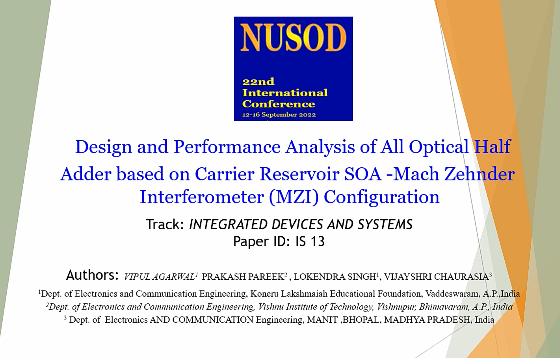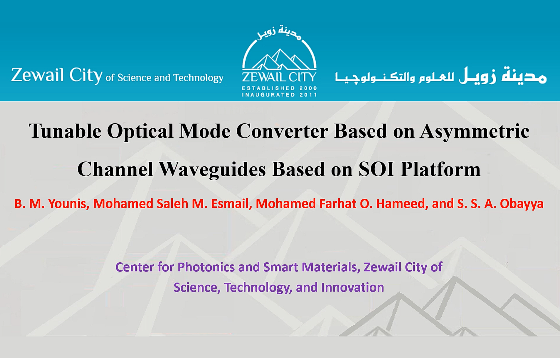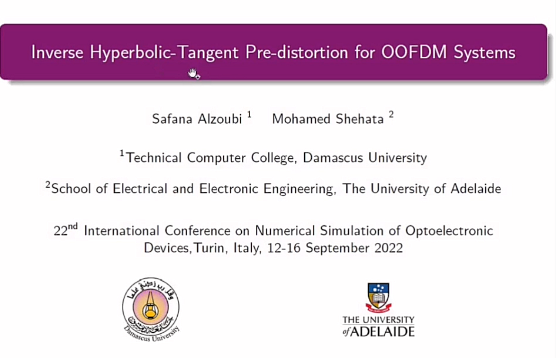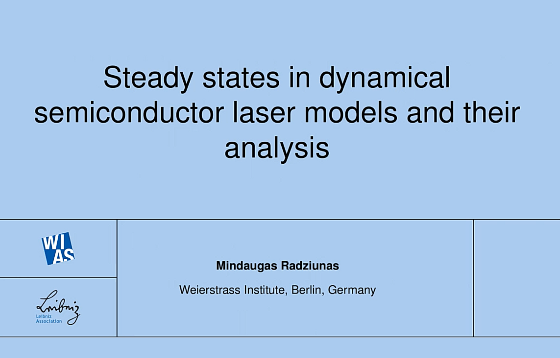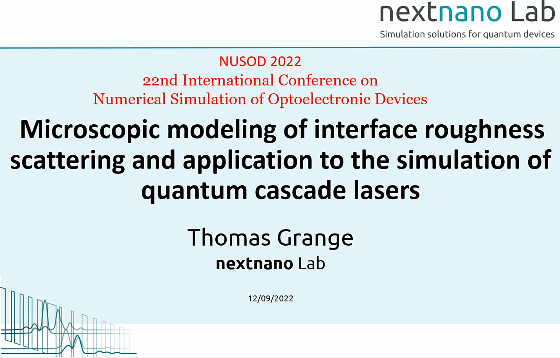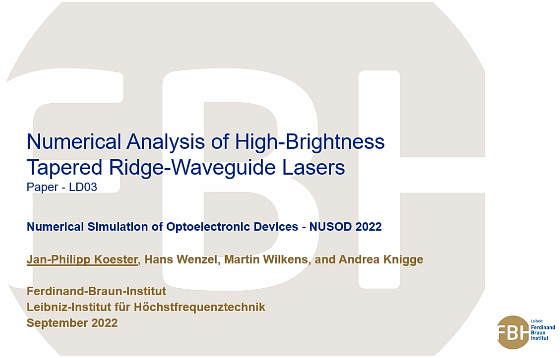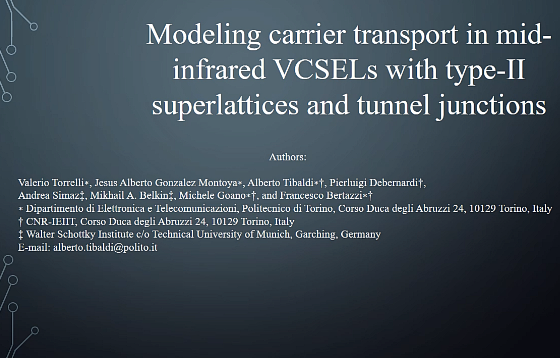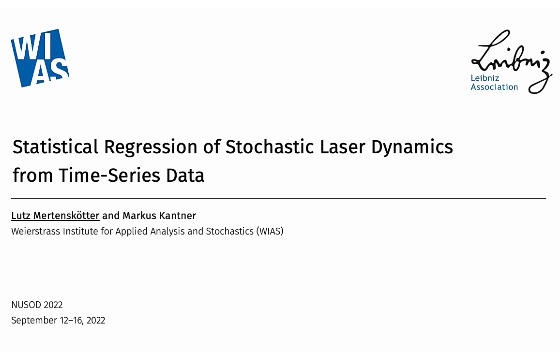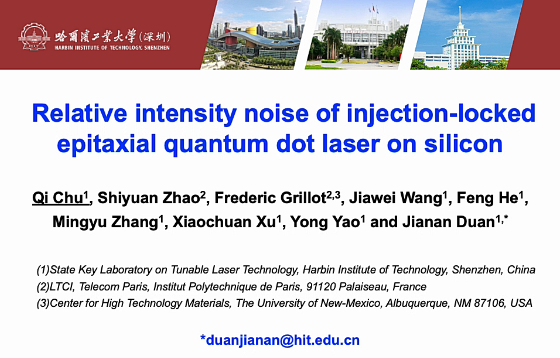


A novel non-uniform time-stepping procedure is developed to reduce the memory usage and simulation time—by two orders of magnitude—of photodetectors when detecting high-peak-power, ultra-short optical pulses. The proposed procedure can be used in other marching-on-in-time solvers to achieve the same for the simulations dealing with ultra-short pulses.
D02 – Electro-Optical Simulation and Characterization of DCR and secondary emission in SPADs
We demonstrate the use of simulations in the modeling and characterization of important aspects of Single Photon Avalanche Detectors (SPADs). Electrically, we discuss the use of drift-diffusion and avalanche triggering probability solvers and results for dark count rate (DCR) and their comparison to measurements. Optically, we discuss the use of full wave electromagnetic solvers to […]
D03 – 3D multiphysics transient modeling of vertical Ge-on-Si pin waveguide photodetectors
We report transient simulations of Ge-on-Si vertical pin waveguide photodetectors (WPDs), where the optical generation term used by the time-domain model is the FDTD solution of the electromagnetic problem treated as a spatially-distributed pulsed signal. This approach, validated against experimental measurements of the frequency response, paves the way to future studies of the dynamic response […]
D04 – Numerical simulation on the dependence of photoresponse on the thickness of the charge layer for GaN SAM avalanche photodiodes
GaN avalanche photodiode (APD) has important application prospects in the field of solar-blind ultraviolet (UV) detections. The back-illuminated GaN-based detector has been widely studied due to the advantages such as easy integration with readout circuit. Numerical model of GaN APD is established. The influence of the key function layer (charge layer) thickness on the device […]
D05 – Mode-Guided Infrared Absorption in Ge/SiO2 Grating for Large-Angle and Broadband Photodetection
The numerical simulation of the electromagnetic properties of the Ge/SiO2 grating structure with bottom distributed Bragg reflector. With mode guiding in Ge, the structure exhibits an absorption angle of 100° and broadband behavior from 1300 to 1500 nm.
D06 – Examination of Resonant Cavity Enhanced Strain Compensated SiGeSn/GeSn Interband MQWIP
In this work, mathematical investigation is done for the potential of Group IV alloy based resonant cavity enhanced interband multiple quantum well photodetector (MQWIP). Strain balanced multiple quantum well structure is proposed to be configured between two Bragg reflectors (mirrors) to form a resonant cavity. Responsivity is calculated by solving the rate equation in each […]
D07 – Theoretical study of back-to-back avalanche photodiodes for mid- and longwave infrared applications
The dual-band N+-p-p-p-P+-p-p-p-n+ avalanche photodiode (APDs) structure is designed and numerically analyzed in detail. We conducted a theoretical study of APD for medium wave (MWIR) and longwave infrared (LWIR) applications. The current-voltage (I-V) characteristics for the bias range -6V
D08 – Numerical Simulation on the Effect of Operation Temperature on the Optical Transfer Characteristics for GaN/AlGaN SAM Avalanche Photodiodes
GaN/AlGaN avalanche photodiodes (APDs) have important application values and broad application potentials in the field of solar-blind ultraviolet (UV) detection. However, the self-heating effect has an obvious influence on the output characteristics of GaN/AlGaN APDs. In order to study the influence of self-heating temperature on its performance, the numerical model of GaN/AlGaN APDs is established […]
D09 – Analysis of Differential Phase Shift Quantum Key Distribution using single-photon detectors
We investigated the performance of differential phase shift quantum key distribution using InGaAs/InP and Silicon-APD (avalanche photo diode) for generating secure keys, secure communication distance, and bit error rates under the various operating conditions.We compare the quantum bit error rate and the secure key generation rate as a function of communication length.Our simulation results show […]
IS01 – Network Authentication with Synchronized Chaotic Lasers
We numerically study a hardware method for network authentication, where a pair of matched (twins) chaotic lasers generate the same chaos when they synchronize, being subject to the same optical injection from a third chaotic laser. One of the lasers is in the secure environment, the other in the unsecure environment, and authorization is granted […]
IS02 – Exploring modern alternatives to the Whittaker-Shannon-Nyquist sampling theorem in THz Spectroscopy
We present simulations for a THz cross-correlation spectroscopy (THz-CCS) optical system. The aim is using compressed sensing (CS) to reconstruct the THz signal from a random under sampling of the signal and potentially replacing a delay stage unit of the THz-CCS system to increase robustness and cost-effectiveness of the optical system. We present results from […]
IS03 – Polarization-randomized gateway against detector-blinding hacks of quantum key distribution
A quantum key distribution system –employing a key time-bin qubit and a security-pass polarization-randomized qubit– is shown to overcome a wide class of intercept-resend attacks adopting the use of faked-state light; including attacks based on blinding of single-photon avalanche detectors (SPADs).
IS04 – All-optical AND Logic Gate Based on Semiconductor Optical Amplifiers for Implementing Deep Recurrent Neural Networks
The development of optical logic gates is a key factor for enabling next generation of computations in the context of Deep Learning and Quantum Computing. In this work, we introduce a scheme for the implementation of an all-optical AND logic gate, which makes use of semiconductor optical amplifiers (SOA) in cross-phase modulation configuration combined with […]
IS05 – Thermal crosstalk mitigation in a dual-drive Mach-Zehnder Modulator
Dual-drive, PIN-diode based Mach-Zehnder modulators are pivotal for power-efficient and cost-effective CMOS compatible optical transceivers with small footprints. However, the basic chip materials have substantial thermal conductance resulting in thermal crosstalk, which eventually deteriorates the modulator performance in terms of bandwidth and data transmission capabilities. In this work, we simulate and analyze the influence of […]
IS06 – Characteristics of All-Optical Gate Switch Employing Quasi-Phase-Matched Lithium Niobate Devices
We analyze characteristics of all-optical switches using the cascade of second harmonic generation and difference frequency mixing in quasi-phase-matched lithium niobate devices. Numerical calculations consider not only the pulse waveforms but also the optical noises.
IS07 – OFDM Transmission using a Self-seeded ring Cavity based on a Semiconductor Optical Amplifier
This paper discusses the transmission of optical Orthogonal Frequency-Division Multiplexing (OFDM) format modulation in a resonant cavity based on a Semiconductor Optical Amplifiers Fiber Cavity Laser (SOA-FCL). The OFDM Subcarriers are configured and transmitted to fit the Cavity Resonance Modes (CRM). As a result, the authors show a novel principle of OFDM transmission in a […]
IS08 – Flat-band 8-Channel Optical MUX/DeMUX for Long Reach 400GbE Applications
We propose novel optical demultiplexer scheme for LR-8 applications, and theoretically verify flatband spectral response with the discrete 8-channel wavelengths. By the additional band rejection filter, non-continuous wavelength filtering response was achieved with spectral flatness and low crosstalk of < -15dB within an entire LR-8 targeted spectral range.
IS09 – Collision Dynamics of Solitons in a Grating Assisted Semilinear dual-core System with Phase Mismatch
The collision dynamics between two counterpropagating moving Bragg grating solitons and their outcomes in a model of semilinear dual-core Bragg-grating coupler with phase mismatch are investigated. The influence of gratings phase mismatch on the collision outcomes is also discussed.
IS10 – Modelling and Characterisation of Silicon Waveguides in Photonic Integrated Circuits
Modelling and characterization of basic waveguiding structures in integrated photonics is important due to the large variety of established and emerging technologies used for fabrication. In this contribution we present a modelling and characterization approach for integrated silicon waveguides. We provide waveguide characteristics calculated from eigenmode simulation and optical measurement results.
IS11 – Numerical Investigation of the Performance of OAM-Mode Shifting Recirculating Delay Loop Under the Effect of Mode Shifter Displacement
We investigate the effect of OAM mode shifter displacement on the performance of the OAM-mode shifting recirculating delay loop by simulating the beam propagation using Kirchhoff-Fresnel diffraction. Simulation results indicate that 20 delayed replicas may be obtained with >10 dB signal-to-crosstalk ratio (SCR) if alignment is perfect and ℓshift=+1
IS12 – A compact Kerr effect based Plasmonic Logic Device for Nanotechnology Applications
This work utilizes the vital property of Kerr effect of altering the phase of optical signal to numerically investigate the plasmonic XOR/XNOR logic device for nanotechnology applications. Extinction ratio (ER) and insertion loss (IL) of basic switching element (Mach-Zehnder interferometer) is evaluated and plotted as a function of length of interferometric arms. The obtained result […]
IS13 – Design and Performance Analysis of All Optical Half Adder based on Carrier Reservoir SOA -Mach Zehnder Interferometer (MZI) Configuration
In this manuscript, Carrier reservoir SOA (CR-SOA) based half adder is proposed and simulated at 100 Gb/s. CR-SOA has fast carrier recovery, due to presence carrier reservoir which enables its use at higher data rates on the other hand conventional SOA suffers from slow carrier recovery which leads to unequal amplification of pulses. The obtained […]
IS14 – Tunable optical mode converter based on SOI asymmetric channel waveguides
An optical mode converter based on asymmetric dual channel waveguides is reported and analyzed. The first channel is infiltrated with nematic liquid crystal (NLC) material while the second one has BK7 glass core. The first higher order mode of the NLC core is coupled to the fundamental mode of the neighboring core with high coupling […]
IS15 – Inverse Hyperbolic-Tangent Pre-distortion for OOFDM Systems
We propose an inverse hyperbolic-tangent-based digital pre-distorter that can suppress the Mach-Zehnder modulator-induced harmonic distortions by about 13 dB for single-tone signals, while maintaining the peak-to-average power ratio in optical orthogonal frequency division multiplexed signals.
LD01 – Steady states in dynamical semiconductor laser models and their analysis
We present an algorithm for calculating steady states in the dynamic PDE model for SLs admitting gain compression, spatial hole burning, and multilevel carrier rate equations. Presented example simulations rely on 1(time)+1(space)-dimensional traveling-wave- and Lang-Kobayashi-type models.
LD02 – Microscopic modeling of interface roughness scattering and application to the simulation of quantum cascade lasers
The theory of interface roughness (IFR) scattering in semiconductor heterostructures is well established in the case of idealized abrupt interfaces. However, in reality, interfaces have a finite width, i.e. interfaces are graded. In such case, the effect of interface roughness, i.e. the breaking of in-plane invariance, a general framework has been lacking to describe the […]
LD03 – Numerical Analysis of High-Brightness Tapered Ridge-Waveguide Lasers
In this work, we present a simulation-based analysis of a CW driven tapered ridge-waveguide laser having a high lateral brightness of 5 W · mm−1mrad−1 at 2.5 W optical output power.
LD04 – Modeling carrier transport in mid-infrared VCSELs with type-II superlattices and tunnel junctions
Vertical-cavity surface-emitting lasers are promising light sources for sensing and spectroscopy applications in the midinfrared 3 ÷4 µm spectral region. A type-II superlattice active region is used for carrier injection and confinement, while a buried tunnel junction defines a current aperture, decreasing the series resistivity. Highly nanostructured to optimize device performance, mid-infrared VCSELs pose modeling […]
LD05 – Data-Driven Modeling of Non-Markovian Noise in Semiconductor Lasers
Non-Markovian noise degrades the coherence properties of semiconductor lasers and contributes significantly to broadening of the linewidth. Since modeling of such colored noise systems from first principles is not accessible, we aim for a data-driven modeling approach in which a system of stochastic rate equations shall be reconstructed from time series data.
LD06 – Relative intensity noise of injection-locked epitaxial quantum dot laser on silicon
This work investigates the relative intensity noise (RIN) characteristics of quantum dot (QD) lasers epitaxially grown on silicon subject to the optical injection. The effect of threading dislocation (TD), which acts as nonradiative recombination centers in the Shockley-Read-Hall (SRH) process, is considered in the rate equation model. The results reveal that the RIN is enhanced […]

